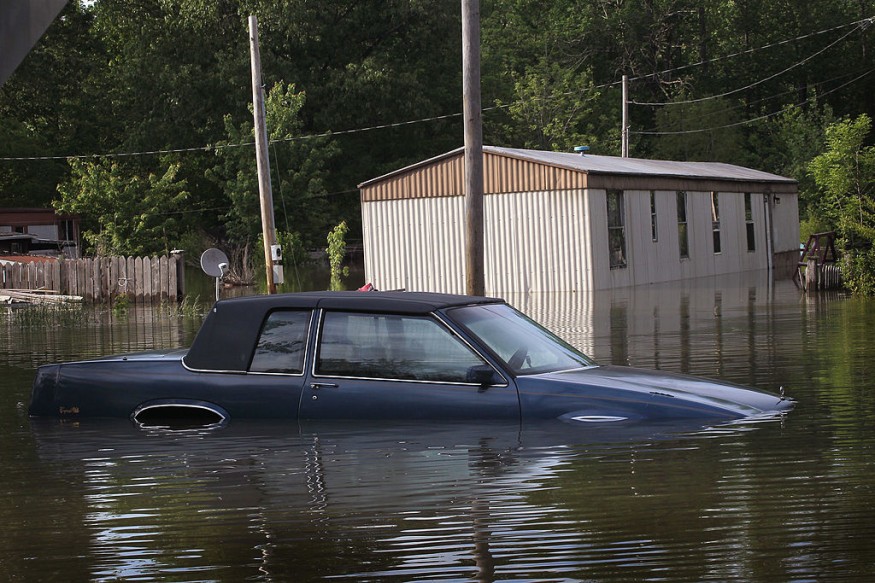What Impact Does Climate Change Have on Floods? Flooding includes many conflicting elements that might influence its frequency and intensity, much like other catastrophic weather disasters.

Floods Everywhere
Everywhere in the world, floods can occur at any time of the year. However, determining the connection between a specific flood and climate change is no easy task, according to experts, made challenging by the absence of historical data, particularly for the most intense floods, which happen seldom.
It might be alluring to blame global warming for all floods and other catastrophic disasters. Even while climate can impact weather, the weather itself is not climate. For instance, experts are certain that climate change increases the frequency of sweltering days. They are less certain that severer tornadoes are being caused by climate change.
According to Daniel Swain, a climate scientist at the University of California, Los Angeles, floods lie between heat waves and tornadoes on the confidence scale. I would reply, "Yes, probably, but..."
Like other catastrophes, flooding involves various competing elements that may have a conflicting impact on its frequency and intensity. Climate change is an increasingly significant component of the mix, which makes excessive rainfall in many storms worse.
Precipitation, snowmelt, terrain, and the soil's moisture are vital factors that affect the formation of floods. Some aspects could be more important than others, depending on the type of flood.
A river flood often referred to as a fluvial flood, is when a river, stream, or lake overflows with water, frequently due to significant rainfall or swiftly melting snow. A coastal flood happens when water overtakes land regions close to the shore, frequently after a violent storm that coincides with high tides.
Flooding may also occur in places where there are no adjacent water bodies. Flash floods can form everywhere that sees heavy rainfall for a brief time.
Measuring Floods

Floods are measured using a variety of metrics, such as stage height (the height of the water in a river relative to a given point) and flow rate (how much water passes by a specific location over a particular time period).
However, experts frequently refer to a flood's intensity using the more straightforward term "a 100-year flood," which refers to a flood that is thought to be an extremely unusual and intense event and has a 1% probability of occurring in any given year. However, the phrase is not a guarantee; it is only a statement of possibility. In a short period of time, an area may have two floods with a 100-year frequency.
Have there been more floods recently? Not quite. Unexpectedly, there has not been a comparable rise in flood occurrences, although heavy precipitation events have been exacerbated due to climate change.
According to a 2021 study published in Nature, climate change is probably increasing the frequency and severity of catastrophic flood occurrences while lowering the number of mild floods.
Higher rates of evaporation lead soils to dry up more quickly as the temperature heats. Since drier soils may absorb most of the rainfall, the early soil moisture conditions are crucial for those mild and frequent floods.
Are floods getting worst?
The initial soil wetness of greater flood events is less significant "because there is so much water that the soil wouldn't be able to absorb all of it, anyhow," according to Manuela Brunner, a hydrologist at the University of Freiburg in Germany and the study's primary author. Dr. Brunner stated that any additional water injected after the soil has reached its maximum saturation will run off and contribute to the formation of floods.
In the "business as usual" scenario, where human greenhouse gas emissions continue at their current rate and the globe continues to warm, scientists are convinced that some forms of floods will become more common.
First, as sea levels rise, coastal flooding will get worse. The volume of the ocean is increased by melting ice sheets and glaciers, and the water itself expands as it warms.
Second, when there are more severe precipitation events, there will be an increase in flash floods. More moisture is discharged as rain or snow when the temperature is warmer because evaporation increases.
Additionally, scientists anticipate that as the climate warms, flash floods will become "flashier," which would shorten their duration while increasing their size. Floods with greater flash might be more harmful and destructive.
A fatal cycle of climate disasters may also increasingly include flash floods after devastating wildfires. This is because wildfires decimate forests and other plants, which weakens and reduces the permeability of the soil.
Related Article : Exposure to Major Disasters Can Cause Long-Term Mental Health Problems
For more climate and weather updates, don't forget to follow Nature World News!
© 2026 NatureWorldNews.com All rights reserved. Do not reproduce without permission.





